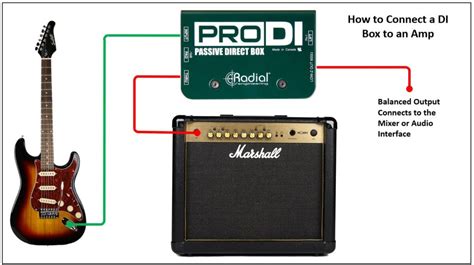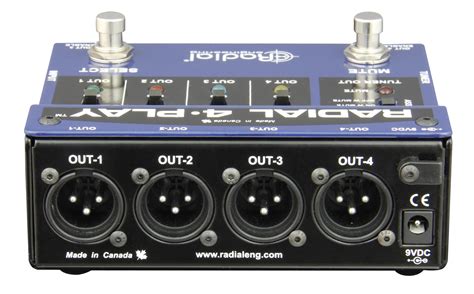do you need di box for electric guitar If you gig a lot or do a lot of studio recording, you should have a good DI box. It’s a good idea for electric guitarists; it’s an even better idea for bass guitarists and acoustic guitarists. Turn right and climb up the metal boxes to find a chest containing a piece of amber. Drop back down to the floor and move the boxes to the next raised section with your magnesis. You’ll have.
0 · guitar amp with di output
1 · di box with volume control
2 · di box explained
3 · best guitar direct box
4 · best guitar di for recording
5 · best di box for recording
6 · best di box for guitar
7 · active di box for guitar
Contact Z & M SHEET METAL INC by telephone: (703) 631-9600 by fax: (703) 263-9005 by email: [email protected].
If you gig a lot or do a lot of studio recording, you should have a good DI box. It’s a good idea for electric guitarists; it’s an even better idea for bass guitarists and acoustic guitarists.
For electric guitars, you should always use an active DI box. The golden rule of DI boxes is that if you have a passive source, you should use an active DI box. . Regardless of your specific application, let’s break down what exactly a DI Box is and whether you need one. What is a DI Box? In the most basic terms, a DI Box (Direct box) is a device that converts unbalanced, high-impedance signals from instruments like electric .
For acoustic-electric guitars, the main advantage of using a DI is being able to run an XLR cable between a DI box and a mixing board. The guitar has a 1/4″ input jack that takes .Using a DI box, you can keep the unbalanced connections short (from the instrument to the DI and from the DI to the amp) while running the balanced output of the DI the long distance to the mixer input. This can be helpful for .
As such, you can use a DI box to convert the high impedance, instrument level signal produced by your electric guitar to a low impedance, mic level signal. So now, the signal from your electric guitar can be connected to your mic input. DI stands for direct injection. That is exactly what a DI box allows. You may hear them referred to as direct boxes too. With a direct box, you don’t need to haul an amp around since it’s designed to convert the signal into a . If you're recording guitar at home and want to capture the direct sound of your guitar without an amp, you don't need a DI box. Connect your guitar to the Hi-Z input on your audio interface using an unbalanced 1/4" instrument . Electric guitar. A DI can be used to take a line in from an electric guitar. When dealing with electric guitars and electric guitar amplifiers, better results will often (not always) be obtained by instead using a microphone in .
Ready to plug into a live system? Record direct into a board? Sweetwater's experts walk you through the many use cases of DI boxes.
If you gig a lot or do a lot of studio recording, you should have a good DI box. It’s a good idea for electric guitarists; it’s an even better idea for bass guitarists and acoustic guitarists.For electric guitars, you should always use an active DI box. The golden rule of DI boxes is that if you have a passive source, you should use an active DI box. On the other hand, active sources benefit from passive DI boxes. Regardless of your specific application, let’s break down what exactly a DI Box is and whether you need one. What is a DI Box? In the most basic terms, a DI Box (Direct box) is a device that converts unbalanced, high-impedance signals from instruments like electric guitars, or basses into balanced, low-impedance signals.
For acoustic-electric guitars, the main advantage of using a DI is being able to run an XLR cable between a DI box and a mixing board. The guitar has a 1/4″ input jack that takes an instrument cable that can then run directly into the DI, which provides an .
Using a DI box, you can keep the unbalanced connections short (from the instrument to the DI and from the DI to the amp) while running the balanced output of the DI the long distance to the mixer input. This can be helpful for just about any signal source that needs to travel over a .As such, you can use a DI box to convert the high impedance, instrument level signal produced by your electric guitar to a low impedance, mic level signal. So now, the signal from your electric guitar can be connected to your mic input. DI stands for direct injection. That is exactly what a DI box allows. You may hear them referred to as direct boxes too. With a direct box, you don’t need to haul an amp around since it’s designed to convert the signal into a balanced signal that goes through an XLR (microphone) output. If you're recording guitar at home and want to capture the direct sound of your guitar without an amp, you don't need a DI box. Connect your guitar to the Hi-Z input on your audio interface using an unbalanced 1/4" instrument cable and you're ready to record.
Electric guitar. A DI can be used to take a line in from an electric guitar. When dealing with electric guitars and electric guitar amplifiers, better results will often (not always) be obtained by instead using a microphone in front of the loudspeaker.Ready to plug into a live system? Record direct into a board? Sweetwater's experts walk you through the many use cases of DI boxes.If you gig a lot or do a lot of studio recording, you should have a good DI box. It’s a good idea for electric guitarists; it’s an even better idea for bass guitarists and acoustic guitarists.
metal gear 2 solid snake cardboard box
For electric guitars, you should always use an active DI box. The golden rule of DI boxes is that if you have a passive source, you should use an active DI box. On the other hand, active sources benefit from passive DI boxes. Regardless of your specific application, let’s break down what exactly a DI Box is and whether you need one. What is a DI Box? In the most basic terms, a DI Box (Direct box) is a device that converts unbalanced, high-impedance signals from instruments like electric guitars, or basses into balanced, low-impedance signals. For acoustic-electric guitars, the main advantage of using a DI is being able to run an XLR cable between a DI box and a mixing board. The guitar has a 1/4″ input jack that takes an instrument cable that can then run directly into the DI, which provides an .Using a DI box, you can keep the unbalanced connections short (from the instrument to the DI and from the DI to the amp) while running the balanced output of the DI the long distance to the mixer input. This can be helpful for just about any signal source that needs to travel over a .
As such, you can use a DI box to convert the high impedance, instrument level signal produced by your electric guitar to a low impedance, mic level signal. So now, the signal from your electric guitar can be connected to your mic input. DI stands for direct injection. That is exactly what a DI box allows. You may hear them referred to as direct boxes too. With a direct box, you don’t need to haul an amp around since it’s designed to convert the signal into a balanced signal that goes through an XLR (microphone) output. If you're recording guitar at home and want to capture the direct sound of your guitar without an amp, you don't need a DI box. Connect your guitar to the Hi-Z input on your audio interface using an unbalanced 1/4" instrument cable and you're ready to record.

guitar amp with di output

Worked on some conference/meeting rooms where sheets of metal were glued to the sheetrock, then a cloth covering was placed over that. They could hang charts and drawings with magnets, without damaging the wall. We were asked not to mount our boxes until after the metal and cloth were applied.
do you need di box for electric guitar|di box explained